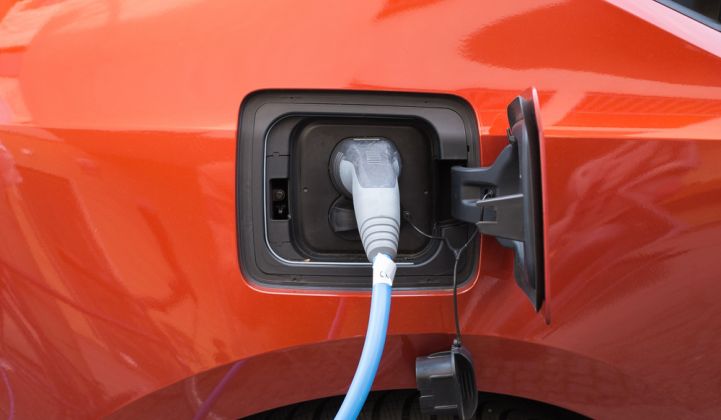The Hawaiian Electric Company is testing a behind-the-meter energy storage solution with a direct current fast-charging station for electric vehicles. The utility is investigating whether the battery is cheaper than upgrading the grid to accommodate the charger.
Greenlots will install the system and manage it using its SKY platform with support from the Electric Power Research Institute. The public DC fast charger will be available to EV drivers at HECO's approved rate of about $6 to $7 per session for the six-month pilot.
Bringing together EVs and batteries is happening in a smattering of places across the U.S. Many of the other EV chargers with behind-the-meter battery backup are designed to help the host of the charger avoid high demand charges, as in the partnership between ChargePoint and Green Charge Networks.
Other partnerships, including one between Panasonic Enterprise Solutions and Powertree Services, aim to offer a combination of solar, batteries and EV charging that not only reduces demand charges but also eliminates the need for electrical upgrades at the host site, while also providing ancillary services. Another project in Carmel, Indiana with Duke Energy and Toshiba brings together solar, batteries and a charging station. However, most battery installations with EV charging use level 2 240-volt chargers, rather than DC fast charging.
The HECO pilot at a mall in West Oahu is not focused on ancillary charges, nor is it integrating on-site solar power. Instead, the question it is exploring is simpler: Is it cheaper to put in a battery to fulfill the energy load of a 50-kilowatt, 480-volt DC fast charger than it is to complete otherwise necessary upgrades to the grid infrastructure, such as upgrading the transformer? HECO is investigating a narrow issue, but it is part of a larger trend by utilities to leverage new technology and demand-side resources to delay or eliminate the need for grid upgrades.
“Energy storage is just another tool in our tool belt,” said Brett Hauser, CEO of Greenlots. Greenlots’ SKY is an open-source charging platform for EV management that is hardware-agnostic and is also being used by other utilities, such as Southern California Edison, which used SKY to test pricing models for EV demand response with its employees last year.
For Hawaii, convenient fast charging will be necessary if it is to reach its goal of 100 percent clean energy by 2045. As of January, Hawaii had more than 4,000 electric vehicles, up 25 percent from the year before. Home charging is most common with EVs, but well-placed fast chargers will be a crucial component of delivering EVs into the mainstream, according to a 2013 study by Recargo.
But fast charging comes at a cost. DC fast chargers are significantly more expensive than level 2 chargers, although prices are falling, and many distribution circuits cannot support the needs of the 480-volt fast chargers compared to the 240-volt level 2 chargers. In many cases, a DC fast charger requires an upgrade to the transformer and feeder wiring.
For charging station owners, that means having a utility that is willing to do the upgrades to get DC fast charging. Five years ago, Walgreens ran into utility resistance across the U.S. when it was installing approximately 150 fast chargers out of a planned 800 at its stores, although it wanted many more DC chargers.
Depending on the results of the HECO study, there could be a middle path. If a battery is cheaper, a utility could pay for it but require the device's availability for grid services when it is not charging cars.
The behind-the-meter battery could be used primarily to support the charger to avoid the need for a grid upgrade, and could also be tapped by the utility for other grid needs, especially on circuits heavily loaded with solar power, which is a reality in HECO’s territory.
Even if the costs are viable for Hawaii, that may not translate into the mainland U.S., where electric costs are usually much lower. Even so, the cost structure is only improving for batteries, making the solution more attractive in coming years, said Hauser.
He added that this is a natural extension of using electric vehicles to mitigate capacity issues for utilities, something that will become more common in places where utilities are thinking dynamically about managing both solar and EV loads on certain circuits.
“Some [utilities] see they lost out on residential solar, and here they have an opportunity to build new revenue streams” with capacity for EV charging, said Hauser. “Energy storage is a logical next step.”



